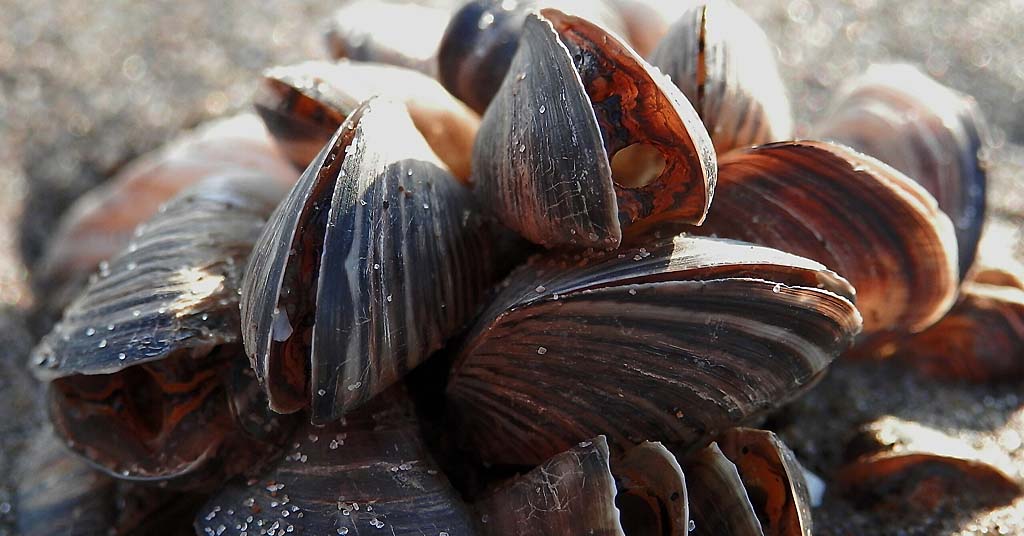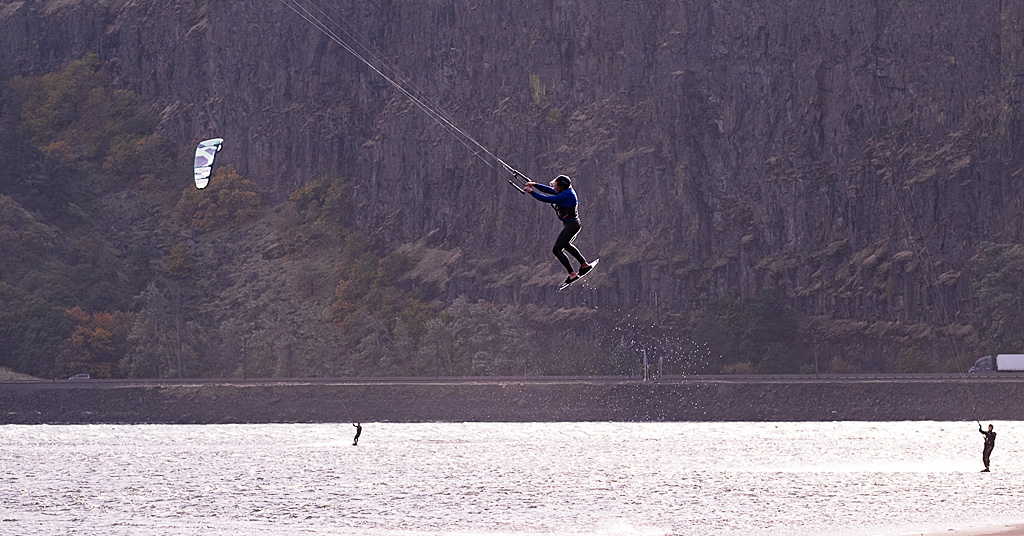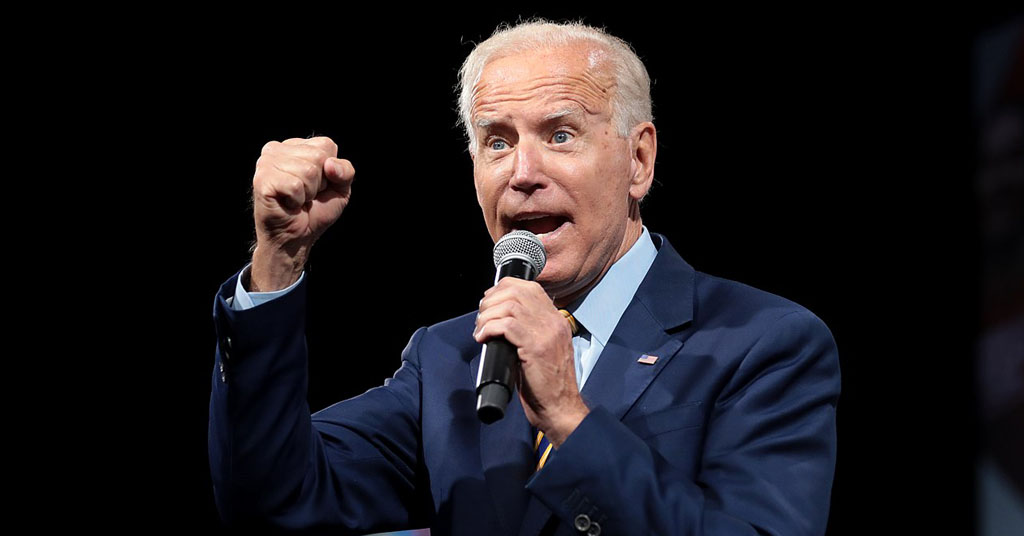By Chuck Thompson. June 4, 2020. The massive Steigerwald Reconnection Project that broke ground on June 1 is an environmental anomaly.
A conservation project of its enormous ambition usually attracts a phalanx of lawyered-up opponents, knee-jerk NIMBYs and ill-informed wet blankets.
But the Steigerwald Reconnection enjoys the kind of widespread public support usually reserved for craft beer and Mother’s Day.
Led by the Lower Columbia Estuary Partnership (LCEP), the project will reconnect 965 acres of historic floodplain at the Steigerwald Lake National Wildlife Refuge in Washougal, Washington, with the Columbia River. To accomplish this, more than two miles of levee will be breached along the river.
Once a vibrant habitat for fish, birds, plants and other life, the floodplain has been cut off from the river since the 1960s. That’s when a large levee system was constructed along the Washington bank.
Upon completion, the Steigerwald Reconnection Project—funded by the Bonneville Power Administration and Washington Department of Ecology at an estimated cost of $25 million—will accomplish the rare feat of making life better for fish, fowl, wildlife, native plants, recreational users, industry, government and local residents.
Here’s how:
1. Increases odds of salmon survival
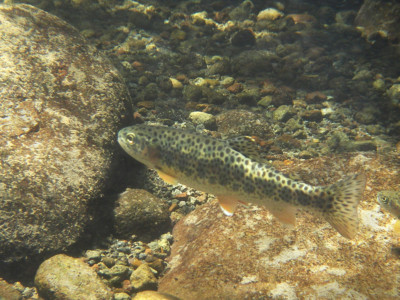
Steigerwald’s restored stream habitat will provide travelers, like this Chinook salmon smolt, a refuge on their journey to the Pacific. Photo by Blayne Eineichner, CTWS
What does a river floodplain do for salmon? Chris Collins, LCEP principal restoration ecologist, explains:
“If you can imagine a juvenile salmonid migrating downstream, it’s looking for and is reliant on floodplain areas, which are a lower-energy environment with a higher concentration of food and a lower concentration of predators,” says Collins. “That’s what a floodplain provides.
“As fish are migrating through the Gorge those habitats are naturally constrained and not present in large acreages. In the Portland-Vancouver metro area, the historic loss of floodplains and wetlands is felt most acutely due to development. So the location of the project at the intersection of those areas provides an important resource in the migration corridor.”
2. Creates more acreage for waterfowl
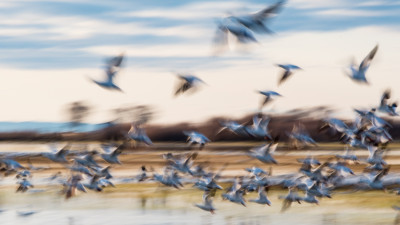
Migrating birds, like these snow geese, utilize Steigerwald. Now they should find it an even friendlier stopover. Photo by Jurgen Hess
Reconnecting the floodplain and river is expected to expand Steigerwald’s wetlands by about 115 acres. Backers stress it’s not just the quantity, but the quality of those wetlands that will make a dramatic difference for birds. Re-establishing the natural hydrologic connection between the Columbia River and Gibbons Creek will lead to a variety of benefits. Collins expects the food base for waterfowl to be “more diverse and higher quality. We’ll certainly see greater capacity for those populations.”
Of the 300-plus species of birds found in Clark County, about 200 have been seen at Steigerwald Lake National Wildlife Refuge. These include raptors, burrowing owls, sage thrashers, avocets, black-necked stilts, Canada goose, wood duck, gadwall, American wigeon, cinnamon teal and bufflehead.
3. Reasserts vitality of native plants

Willow (pictured) and other native plants will no longer wilt in the shadow of invaders. Photo by Jurgen Hess
Cutting off the floodplain from the river has aided the proliferation of invasive plant species. These include reed canarygrass (the area’s largest culprit in displacing native plants), Canada thistle and Japanese knotweed.
The Steigerwald Reconnection project will attack invasive plants on multiple levels. These include physically removing them, limited use of herbicides and planting of native vegetation.
“We’re going to do a lot of grading and lowering the floodplain—and we’re reconnecting to the river—so you get the benefits of hydrology from the Columbia River and Gibbons Creek, which inundates that floodplain for longer periods of the year and to a greater depth,” says Collins. “That prolonged inundation is what you really need to suppress invasive species and promote native wetland species.”
4. Enhances recreational opportunities
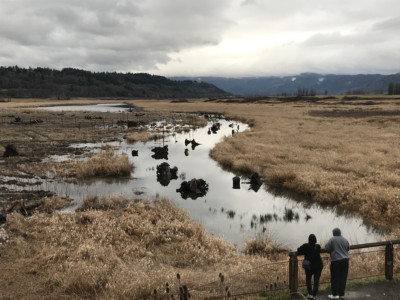
With expanded trails and two new bridges, Steigerwald visitors will access more of the refuge. Photo courtesy of the Lower Columbia Estuary Partnership.
Once the project is complete, longtime fans of the Steigerwald Lake National Wildlife Refuge will notice big changes.
The parking lot will be relocated and its capacity increased by about 50 percent.
The trail system will be about a mile longer. Most importantly, instead of simply hiking along the river using the levee road—which constitutes most of the current experience for walkers—users will weave in and out of the refuge along a trail that passes through restored riparian forests and across two bridges spanning floodplain connection channels. Some 2,000 students and volunteers will engage in stream-side plantings.
5. Saves money, diminishes risk
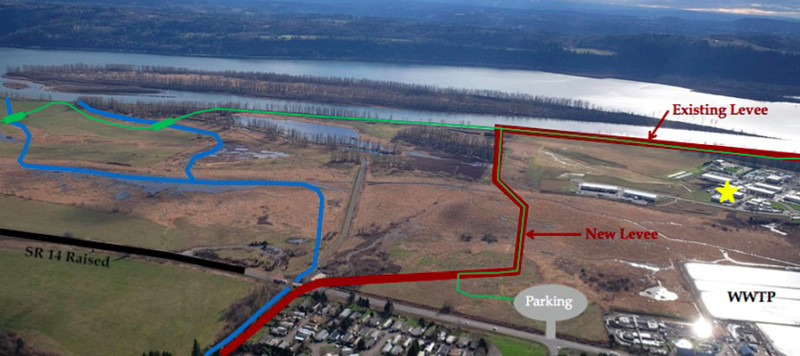
Big plan: Green lines show trails. Blue lines indicate restored Gibbons Creek. Red lines show reconfiguration of levee system. Columbia River at top of photo. WWTP indicates Washougal Wastewater Treatment Plant. Photo courtesy of Refuge Stewards
Although the current levee protects adjacent properties from flooding from the Columbia River, it exacerbates flooding from Gibbons Creek.
With its traditional outflow to the Columbia River blocked, Gibbons Creek now spills over into areas occupied by the Port of Camas-Washougal Industrial Park and Washougal Wastewater Treatment Plant. This requires the Port to maintain a costly and inadequate pumping system.
“The Port’s pumping capacity is quite a bit lower than the flood capacity of Gibbons Creek,” says Collins.
The project’s two new setback levees will better protect the Port, wastewater treatment plant and nearby private residences from flooding.
“The Steigerwald Reconnection Project is a great project which covers a realm of economic and public benefits from environmental, recreation and flood protection,” says David Ripp, CEO of the Port of Camas-Washougal. “The Port of Camas-Washougal sees this project as win-win for both the financial savings to the Port and the environmental improvements for the natural habitat of Steigerwald.”
6. Creates jobs
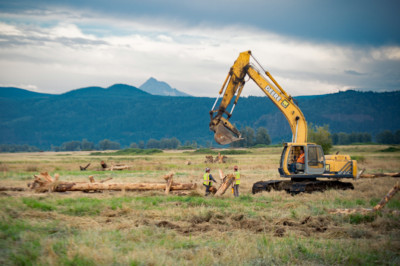
Logs were placed around the refuge in an initial project phase. They’ll serve multiple functions once workers dig new stream channels for fish and wildlife. Photo by Gary Chandler
LCEP estimates the Steigerwald Reconnection Project will create 503 family-wage jobs and bring $67.4 million to the Southwest Washington economy. Rotschy, Inc. of Vancouver and LKE Corporation of Washougal will construct the project.
*OK, there are a few drawbacks
Yes, problems exist. And not just that “Steigerwald Reconnection Project” may be the least sexy name since the invention of SEO.
Construction associated with the effort requires raising a 1,200-foot length of adjacent Washington SR-14 above the 500-year flood level. Drivers may experience intermittent lane closures from June 1-Sept. 30 during construction on SR-14.
As Columbia Insight reported in January, hunters have raised objections.
“Trading wildlife habitat, including waterfowl for fish habitat, will have adverse impacts to waterfowl and other wildlife,” said Albert O’Connor, spokesman for both the Washington Waterfowl Association and Delta Waterfowl. “The benefits to salmon have not been established.”
The BPA’s environmental assessment, however, notes that refuge managers intend to continue providing about the same acreage now devoted to grassland for geese that use the area during migration and nesting seasons.
Most annoying for fans of Steigerwald, the refuge will be closed to visitors for lengthy periods. Beginning June 1, the existing parking lot will be permanently closed. During this time, visitors can access the dike trail from Captain William Clark Park east to the Fish Ladder. However, the refuge’s interior trails will not be accessible to the public. The entire refuge (including the dike trail, beginning just east of Index Street) will be closed to the public July 6-Oct. 2 and again beginning in April 2021.
Inconvenient, for sure, but a worthwhile sacrifice for clear gain on multiple fronts.
“The lower Columbia River has lost over 50 percent of its habitat (since the 1880s and 1890s),” says LCEP executive director Debrah Marriott. “Getting about 1,000 acres of habitat opened is a pretty significant contribution to the recovery of threatened and endangered species.”





